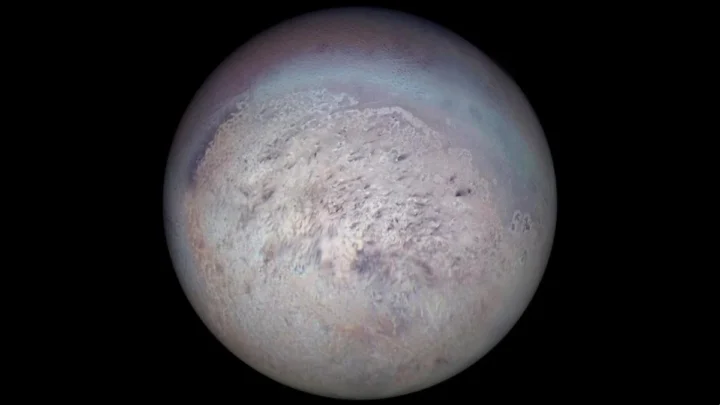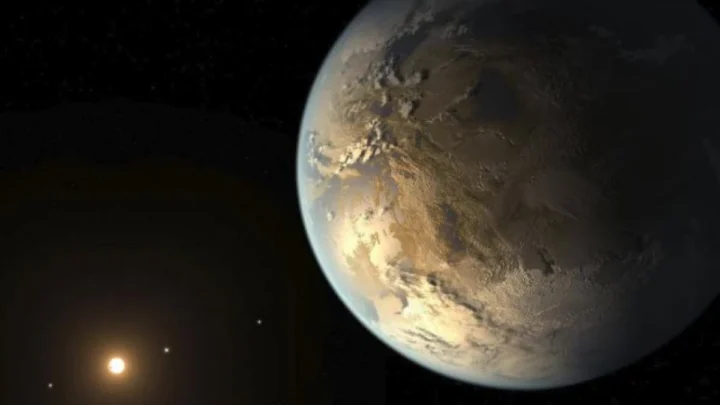If a 40-year-old study, more or less consensual, points to the Moon as having been part of the Earth in the distant past, now there is a new theory, presented by researchers from the University of Pennsylvania, USA. Astronomers say that “our satellite” could have been “stolen”… from space!
After all, isn't the Moon part of the Earth?
Over six missions to the Moon, from 1969 to 1972, Apollo astronauts collected almost 400 kg of lunar rock and soil. The chemical and isotopic analysis of this material showed that it was similar to the rock and soil of Earth: rich in calcium, basaltic and dated to around 60 million years after the formation of the Solar System.
Based on these data, planetary scientists who met at a conference in 1984 in Hawaii reached the consensus that Moon formed from debris after a collision with young Earth.

But, according to two researchers from Pennsylvania State University, USA, this may not be the true story of the Moon's origins.
A new investigation published in the magazine The Planetary Science Journal by Darren Williams, professor of astronomy and astrophysics, and Michael Zugger, engineer and researcher at the Applied Research Laboratory from the same universityproposes another possibility: that the Moon was captured during a close encounter between a young Earth and an Earth binary - the Moon and another rocky object.
That 1984 conference set the narrative for 40 years. But the questions still persisted. For example, a Moon that forms from a planetary collision, taking shape as debris clumps together into a ring, would orbit above the planet's equator. Earth's Moon orbits in a different plane.
The Moon is more aligned with the Sun than with the Earth's equator.
Disse Williams.
Earth took a "giant rock" and turned it into the Moon
Researchers say that in the alternative theory of binary exchange capture, Earth's gravity pulled the binary apart, capturing one of the objects - the Moon - and turning it into a satellite that orbits in its current plane.
According to the new study, there is evidence that this happens in other parts of the Solar System. One example is Triton, the largest of Neptune's moons.

Triton is Neptune's largest natural satellite. Discovered by English astronomer William Lassell in 1846, it owes its name to the god Triton of Greek mythology. It is the only large moon in the Solar System with a retrograde orbit, that is, in a direction opposite to the planet's rotation.
The dominant hypothesis in this field is that Triton was pulled into its orbit from the Kuiper Belt, where one in 10 objects is thought to be a binary.
Triton orbits Neptune in a retrograde orbit, moving in the opposite direction to the planet's rotation. Its orbit is also significantly tilted, at an angle of 67 degrees to Neptune's equator.
Williams and Zugger determined that Earth could have captured a satellite even larger than the Moon—an object the size of Mercury or even Mars—but the resulting orbit might not be stable.
The problem is that the "capture" orbit - the one the Moon follows - started out as an elongated ellipse rather than a circle. Over time, influenced by extreme tides, the shape of the orbit changed.
Today, the Earth's tide is ahead of the Moon. High tide accelerates the orbit. It gives you a boost, a little boost. Over time, the Moon moves a little further away.
Williams explained.

Under the reverse influence of the tides that it generates, our natural satellite moves away from Earth by around 3 centimeters per year, scientists estimate.
The effect is reversed if the Moon is closer to Earth, as it would have been immediately after capture. By calculating tidal changes and the size and shape of the orbit, researchers determined that the Moon's initial elliptical orbit contracted over a timescale of thousands of years.
The orbit also became more circular, rounding its path until the lunar rotation was fixed in its orbit around the Earth, as is the case today.
At that point, Williams said, tidal evolution likely reversed and the Moon began to gradually move away.
Every year, he said, the Moon moves 3 centimeters away from Earth. At its current distance from Earth - almost 385,000 kilometers - the Moon now feels a significant pull from the Sun's gravity.
The Moon is now so far away that both the Sun and Earth are competing for its attention. They're both pulling for her.
The investigator added.
Their calculations show that, mathematically, a satellite captured by binary exchange could behave like Earth's Moon. But he's not sure that's how the Moon came to be.
Nobody knows how the Moon formed. During the last four decades, we have had a hypothesis for its origin. Now we have two. This opens up a treasure trove of new questions and opportunities for future study.
concluded Darren Williams.
Source: pplware.sapo.pt


